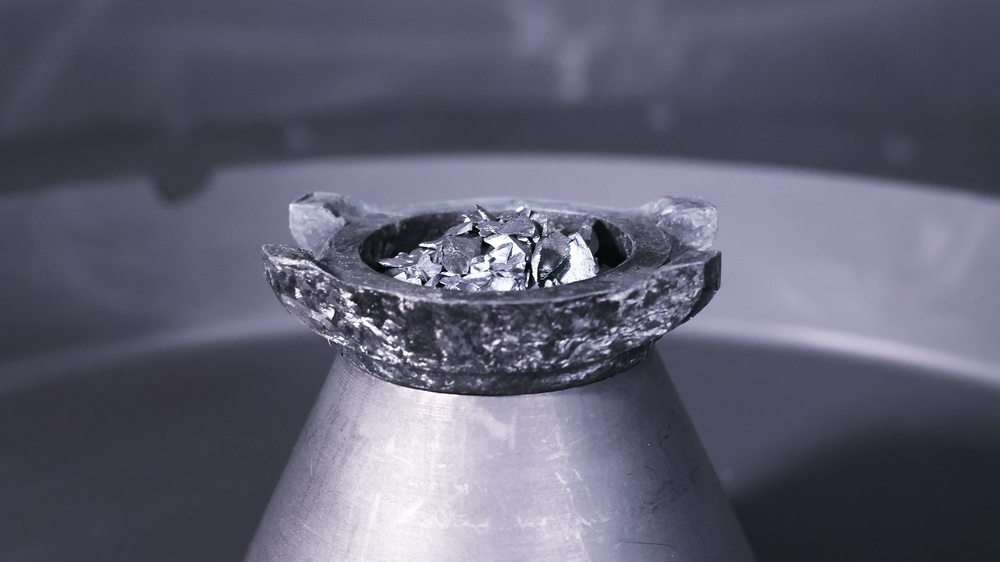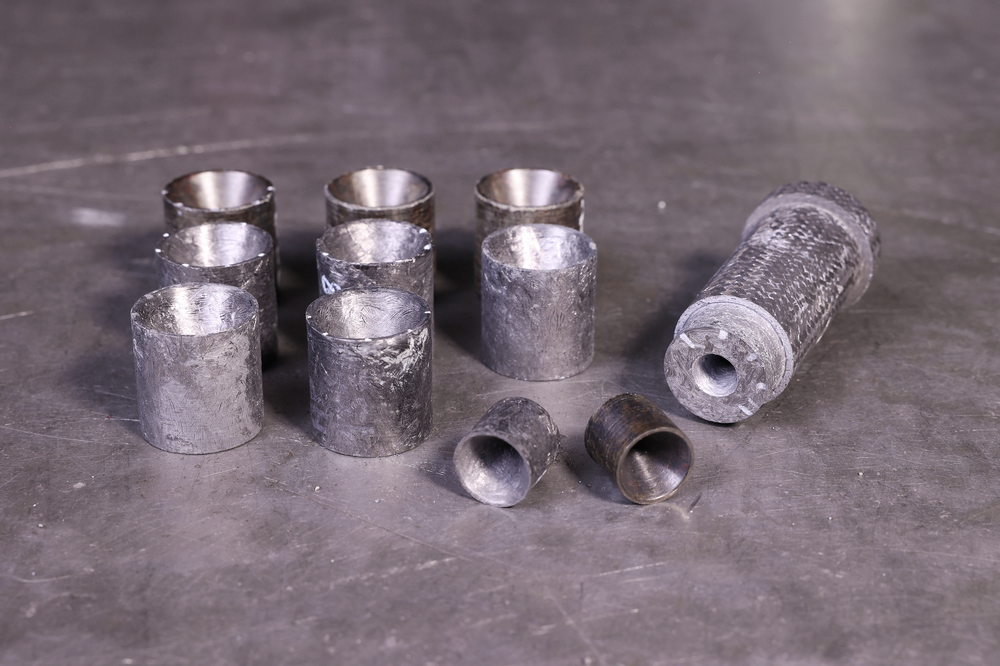From spaceflight to watch case

DLR/KonstantinLanduris

DLR/KonstantinLanduris

DLR/KonstantinLanduris
- In collaboration with the watch manufacturer IWC, DLR has developed a special high-performance ceramic.
- This ceramic fibre composite is used in the casing of a new watch.
- Fibre-reinforced ceramics are very lightweight, particularly hard and can withstand large temperature fluctuations.
- The experience gained from this project is being applied to the development of particularly small structures made from this material, such as those used in the propulsion systems of small satellites.
- Focus: Spaceflight, ceramic fibre composites, innovation & transfer
Carbon fibre-reinforced high-performance ceramics are primarily used in the aerospace industry but are also employed in transport and energy technology. Together with the Swiss watch manufacturer IWC Schaffhausen, the German Aerospace Center (Deutsches Zentrum für Luft- und Raumfahrt; DLR) has developed a special ceramic fibre composite – a form of ceramic matrix composite (CMC) – and the corresponding manufacturing process to incorporate this material into the casing of an IWC watch. This makes the matt black watch case particularly hard, scratch- and corrosion-resistant and at the same time very light. In addition to these functional advantages, which include particularly robust edges, the visual appearance also plays a major role: each case has a unique and interesting surface, created by the individual structure of the carbon fibres used.
Technology transfer: experience and expertise from research to industry
The manufacture of CMC components requires special expertise and sophisticated, multi-stage manufacturing processes. The DLR Institute of Structures and Design in Stuttgart has extensive expertise in the field of ceramic fibre composites, having researched these materials and their associated manufacturing processes for many years. These composites have applications in spaceflight, such as in spacecraft thermal protection shields or the thrust chambers of satellite propulsion systems. On Earth, other industrial applications include brakes for vehicles and lifts.
"The technical collaboration with IWC Schaffhausen was an important step in demonstrating the feasibility of small components made of carbon fibre-reinforced ceramics in particular. The results help to further advance the material and its manufacturing processes," explains Bernhard Heidenreich, scientist and project lead at the DLR Institute of Structures and Design. "Many other projects for aerospace applications can benefit from this, such as our work on further developing fibre-ceramic components for the thrust chambers of satellite propulsion systems." As more and more small and microsatellites will travel into space in the future, they will require materials that are lightweight, extremely temperature-resistant and robust.
"Due to its unique combination of lightness and strength, CMC is an attractive material for watch cases. However, the production of fibre-reinforced ceramic components requires in-depth and very specific expertise. By combining the expertise of IWC and DLR in our respective fields, we were able to successfully push the boundaries of what has previously been possible with CMC parts on such a small scale," explains Lorenz Brunner, Head of Research and Innovation at IWC Schaffhausen.
A highly complex manufacturing process
The manufacturing and processing of ceramics differ fundamentally from the processes used for metals or plastics. The starting point for the CMC watch case is a polymer reinforced with carbon fibres. The fibres are first shredded and infused with resin as a binder. A 'blank' – the basic, pre-formed piece of material that will be further processed – is then produced using a pressing technology specially developed at DLR for short carbon fibres. The blank is designed to match the contours of the watch case as closely as possible. In a high-temperature process known as pyrolysis, this blank is 'baked' and the binder is removed. Pyrolysis takes place at temperatures of around 1600 degrees Celsius and can take up to several days. The result is a component made of porous, carbon-fibre-reinforced carbon.
The next step, siliconization, involves applying silicon crystals to the component, which is then heated again in a furnace. At over 1425 degrees Celsius, the silicon melts, is drawn into the cavities of the component and chemically reacts with the carbon. This creates a new structure made of silicon carbide ceramic. The case is now so hard that it can only be further processed using diamond tools. Whether in aerospace or watchmaking, precision, quality and reliability are crucial in both fields. To ensure this during the watch casing development and manufacturing processes, DLR and IWC continuously tested and reviewed every step. For example, non-destructive testing methods using computer tomography were employed, which DLR uses as standard for structures made of fibre-reinforced plastics and ceramics.
